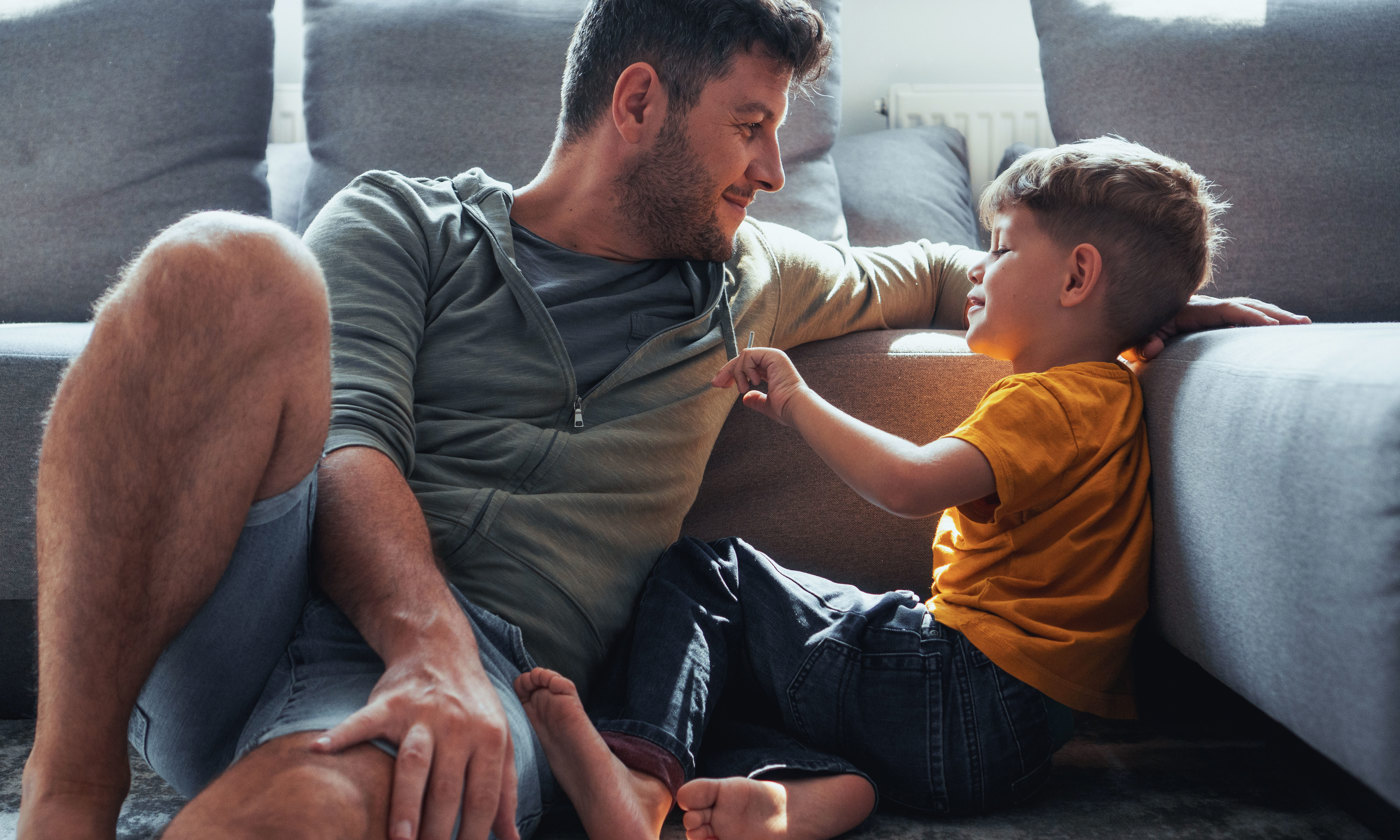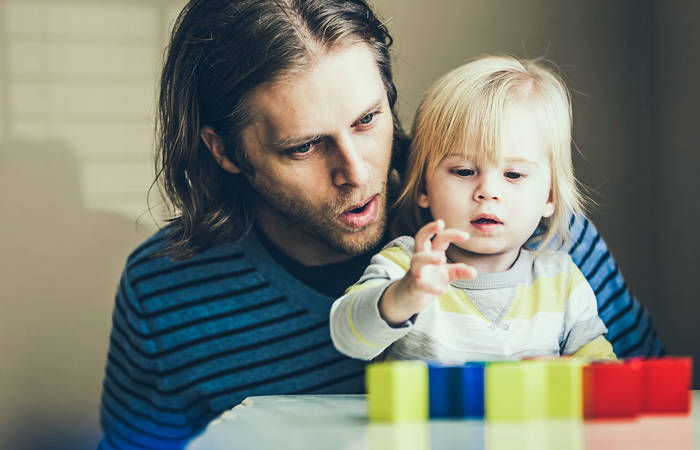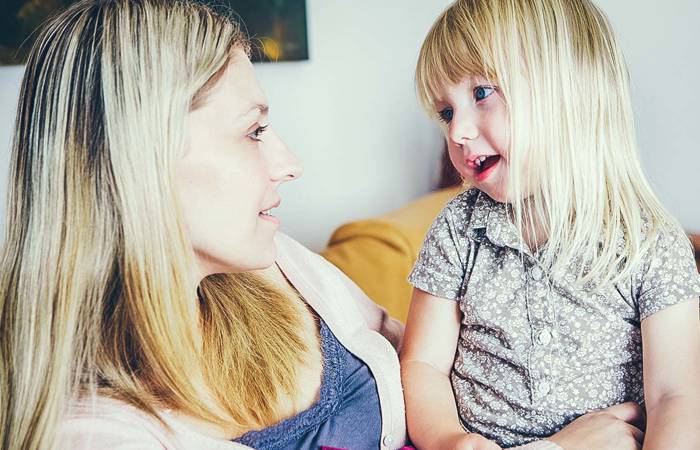Like what you see?
Sign up to receive more free parenting advice.
Thank you for subscribing to our newsletter!
Early Learning

Credit: iStock.com/RapidEye
While conversing as adults can seem natural, for a preschool child, communicating their ideas and knowing the rules of a conversation is a new skill.
University of Melbourne Associate Professor Tricia Eadie explains that conversation underpins key social skills developed in the preschool years, such as playing, interacting with peers, sharing and developing friendships.
Director of the REEaCh Hub (Research in Effective Education in Early Childhood) in the Melbourne Graduate School of Education, Associate Professor Eadie says there is evidence that those social and communication skills can lead to successful outcomes later in childhood.
“Putting all the building blocks of a conversation, like grammar, vocabulary and comprehension, together and into a story is a marker of strong overall language and communication skills,” she says.
“There is a lot of evidence, like those presented in the Early Language in Victoria Study (ELVS) that strong language skills in the preschool years are a good indicator of educational outcomes, success in literacy and social and emotional development later on.”
Children are very observative, they watch us much more than we realise. Seeing conversation skills modelled can really help them understand what is expected of them.Associate Professor Tricia Eadie
Stay up to date with the latest news and articles from First Five Years
Thank you for subscribing to our newsletter!
The art of conversation in the playground
“There are a lot of complex things happening in the simplest of exchanges,” says Dr Eadie.
Having a conversation isn’t as simple as talking non-stop about the fact that there was a snail in the sandpit at the very same time a butterfly flew past.
“In order to be able to have a conversation, there are a whole lot of other skills children need to have a good grasp on,” says Dr Eadie.
She explains that there is first the understanding element. Children need to have a good level of comprehension and be able to understand another person’s meaning.
Then there is the expression element, where they need to combine their skills in vocabulary and grammar to construct their own sentences to form their own ideas.
Finally, there is a conversation layer, which consists of the social communication rules.
“While there is enormous variability in what skills children have at what age, the majority of three-year-old children aren’t going to be the best conversationalists,” says Dr Eadie.
“Instead, there is going to be a progression through the preschool years where children’s conversation skills are being refined and they are learning about those skills.”
For most three-year-old children, they will be able to answer ‘what’ and ‘who’ questions, but may struggle with ‘when’ due to developmentally not yet fully understanding time.
“Some of those skills that you need to have for a conversation, like responding to a question, not all three-year-old children will have that yet,” explains Dr Eadie.
“Instead, their focus is on vocabulary and putting words into sentences.
“This is the starting point of a conversation; they are slowly putting the building blocks of a conversation together.
“They will be able to chat to you, but they most likely won’t stay on topic for very long.”
She explains that with their inability to understand time, three-year-old children struggle with the fundamentals of telling a story, having a beginning, middle and end, which is important to a conversation.
“When you can understand and are able to retell a story, when you are able to describe activities or events or experiences, that makes you become a better conversation partner, and this emerges around the age of four,” Dr Eadie explains.
“By five, children understand time, so they can tell you what they did before lunch. They can tell quite sophisticated stories. They understand that they need to stay on topic and they understand how to take turns in a conversation.”
Dr Eadie says that children watch and model behaviour to build on their own conversation skills.
“If children are struggling with conversing, role playing is very beneficial,” she advises.
Getting the conversation to flow
Modelling conversation skills is one of the best strategies to help a child learn about the rules of conversing.
“Children are very observant, they watch us much more than we realise,” says Dr Eadie.
“Seeing conversation skills modelled can really help them understand what is expected of them.”
Modelling conversation can be as simple as children observing parents talking about their day at the dinner table, or watching a parent talk to another adult, or watching how their friends interact.
Another strategy is one often used by early childhood teachers.
“You often see early childhood teachers talk through conversation elements with a child,” explains Dr Eadie.
“For example, if Mary interrupts Joanne telling her story to the teacher, the teacher will stop Mary and say, hold on Mary, Joanne is telling me her story and when she finishes it will be your turn.
“Talking children through what is happening and why it happens that way, helps them understand those unspoken rules of conversation like not interrupting or taking turns.”
Teaching children about eye contact and body language is another key factor and may need to be explicitly explained for a child to understand their significance.
For conversation role plays, Dr Eadie advises to pick a topic that the child is interested in.
“They will more likely remain engaged if they are passionate about what you are talking about and through the role play, you can teach rules like turn taking because the child will stay on topic,” she explains.
Role play can also be very useful with children who are shy or anxious when it comes to talking to people they aren’t familiar with.
“It’s about practising what they might say to people who they are shy around,” Dr Eadie says.
“It’s also about building their confidence through role play and reassuring them of the times that they converse really well.”
Dr Eadie emphasises that high-quality preschool programs for three and four-year-old children are incredibly important in setting children up with social skills than can benefit them moving into their schooling years much more seamlessly.
“Early childhood programs help children navigate social situations and play an important role in assisting children to develop all their social skills, including conversation,” she highlights.
A word on technology
With the increasing discussion on the impact of screen time on young children, Dr Eadie suggests considering the quality of the screen time, rather than pointing a finger at the device.
“The one thing that I keep at the forefront of discussion on children’s use of technology is that it’s not the device, it’s how the child is using that device and how they are interacting with each other or with an adult while they are using the device,” she says.
“If you think of classic children’s television shows such as Playschool or Sesame Street, those shows actually encourage children to be active and interact while watching.
“It’s not about whether it is a computer or television, it is how, what they are watching, encourages the child to be interacting and communicating with each other or adults at the same time.”







